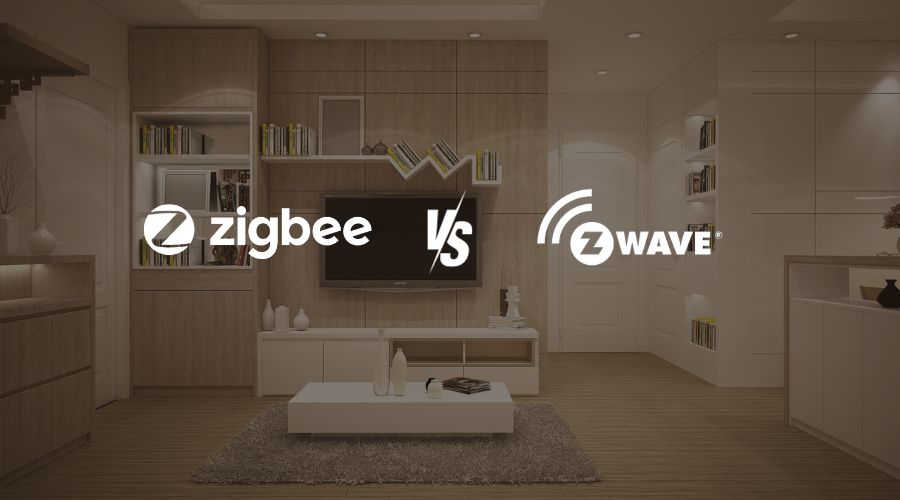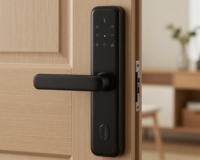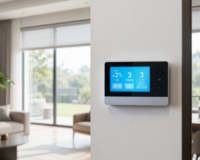The world of home automation is rapidly evolving, with a growing number of devices and technologies that promise to make our lives more convenient and efficient. Two popular wireless standards that underpin many of these smart home devices are Zigbee and Z-Wave. In this comparison, we will explore the key differences and similarities between Zigbee and Z-Wave to help you make informed decisions when building your smart home.
What is Zigbee?
Zigbee is a wireless communication protocol based on the IEEE 802.15.4 standard. It is designed for low-power, short-range communication within the Internet of Things (IoT) ecosystem. Zigbee takes its name from the zigzag flight pattern of honeybees, emphasizing its ability to create dynamic and self-organizing wireless networks.
Key Features of Zigbee:
- Mesh Networking: Zigbee devices can form mesh networks, where each device can communicate with its neighboring devices. This ensures robust connectivity, even in large or complex environments.
- Low Power: Zigbee is optimized for low-power operation, making it ideal for battery-operated devices such as sensors and smart locks.
- Interoperability: Zigbee Alliance, the organization behind Zigbee, promotes interoperability among Zigbee devices from different manufacturers. Zigbee 3.0, introduced in 2016, unified various application profiles, enhancing compatibility.
- Reliability: Zigbee is known for its reliability in home automation applications, thanks to its mesh networking capabilities and self-healing properties.
- Security: Zigbee incorporates robust security features, including encryption, authentication, and access control, ensuring data privacy and protection.
What is Z-Wave?
Z-Wave is another wireless communication protocol specifically designed for home automation and IoT applications. Developed by Z-Wave Alliance, Z-Wave operates in the sub-1 GHz frequency range, which provides extended range and better penetration through walls and obstacles.
Key Features of Z-Wave:
- Mesh Networking: Like Zigbee, Z-Wave devices form mesh networks, which enhance network reliability and coverage. Devices can relay messages through intermediate nodes, ensuring data reaches its intended destination.
- Low Power: Z-Wave devices are known for their low power consumption, enabling long battery life and making them suitable for battery-operated devices.
- Interoperability: Z-Wave Alliance certifies devices to ensure interoperability across different manufacturers. This certification process helps maintain device compatibility.
- Reliability: Z-Wave has built a reputation for its reliability in home automation applications, which is essential for ensuring that devices work seamlessly together.
- Security: Z-Wave incorporates security features, such as AES 128-bit encryption, to protect data from unauthorized access. Device pairing and network management also involve security measures.
Zigbee vs. Z-Wave: A Comparative Analysis
Let’s compare Zigbee and Z-Wave across various parameters:
- Frequency: Zigbee operates in the 2.4 GHz ISM band, which is widely used for various wireless technologies, including Wi-Fi and Bluetooth. Z-Wave operates in the sub-1 GHz frequency range (typically 908.42 MHz in the U.S.), which offers better range and penetration through walls and obstacles. This can be an advantage for larger homes or installations with numerous obstructions.
- Range: Z-Wave generally offers a better range compared to Zigbee, thanks to its lower operating frequency. Zigbee’s 2.4 GHz band can have limitations in range, especially in dense urban environments.
- Interoperability: Both Zigbee and Z-Wave have certification programs that promote interoperability among devices from different manufacturers. However, Zigbee’s open standard and larger ecosystem may make it slightly more versatile in this regard.
- Power Consumption: Both Zigbee and Z-Wave excel in low-power applications, but Z-Wave’s sub-1 GHz frequency can offer advantages in terms of energy efficiency and battery life in certain scenarios.
- Market Adoption: Zigbee has gained significant market traction, particularly in the industrial IoT and commercial sectors. Z-Wave has a strong presence in the residential smart home market. The choice between the two may depend on your specific use case and the devices you plan to incorporate.
- Security: Both Zigbee and Z-Wave prioritize security, but the implementation of security features can vary among devices and manufacturers. Zigbee’s security features include encryption and authentication, while Z-Wave employs AES 128-bit encryption.
- Cost: The cost of Zigbee and Z-Wave devices can vary depending on factors like brand, features, and device type. Generally, Zigbee devices may be more affordable due to a larger ecosystem, but Z-Wave devices often have a reputation for high quality.
Which Protocol is Right for You?
Choosing between Zigbee and Z-Wave for your smart home depends on your specific requirements and priorities. Here are some considerations to help you make an informed decision:
- Range and Obstacles: If your home has a large footprint with multiple walls and obstacles, Z-Wave’s sub-1 GHz frequency may provide better coverage. For smaller spaces or open environments, Zigbee may suffice.
- Device Ecosystem: Consider the specific devices you want to incorporate into your smart home. While both Zigbee and Z-Wave offer a wide range of compatible devices, some unique products may only be available in one ecosystem or the other.
- Security: Evaluate the level of security required for your smart home. Both protocols offer strong security features, but it’s essential to ensure that the specific devices you choose implement them effectively.
- Budget: Compare the costs of devices in both ecosystems, including hubs and controllers. Zigbee devices are often more affordable due to a larger ecosystem, but pricing can vary.
- Compatibility: Check for compatibility with your preferred smart home platform or hub. Many popular hubs support both Zigbee and Z-Wave, offering flexibility in your choice.
- Future Expansion: Consider your future needs and expansion plans. Ensure that the chosen protocol will support your long-term goals for your smart home.
In conclusion
Both Zigbee and Z-Wave are reliable wireless communication protocols suitable for home automation and IoT applications. The choice between the two should be based on your specific requirements, including range, interoperability, device ecosystem, security, and budget. Whichever protocol you choose, the ultimate goal is to create a seamless and convenient smart home experience tailored to your needs and preferences.
Read more:






